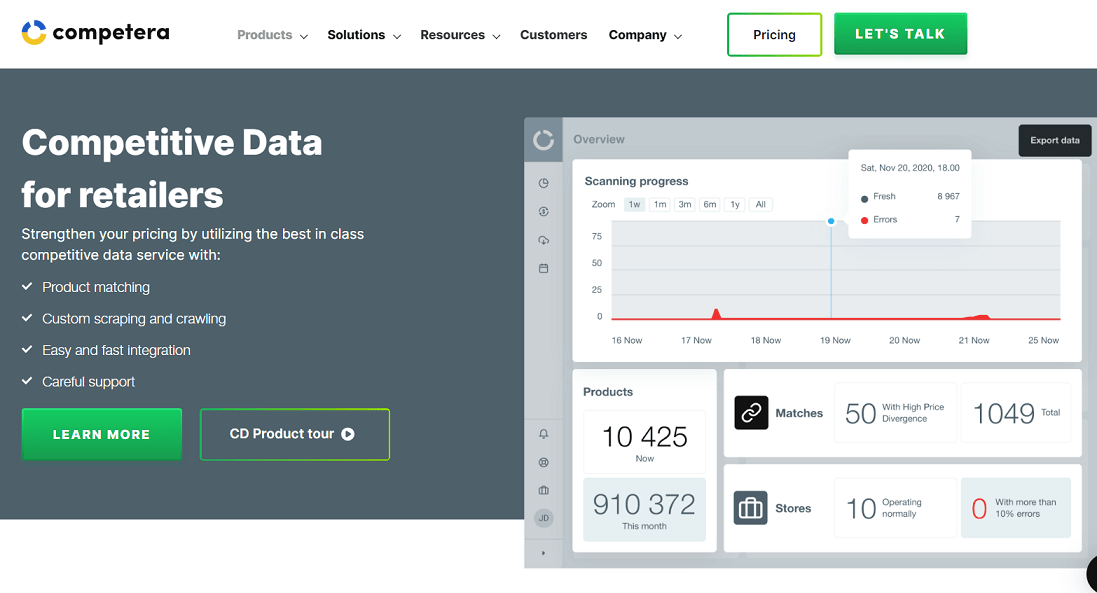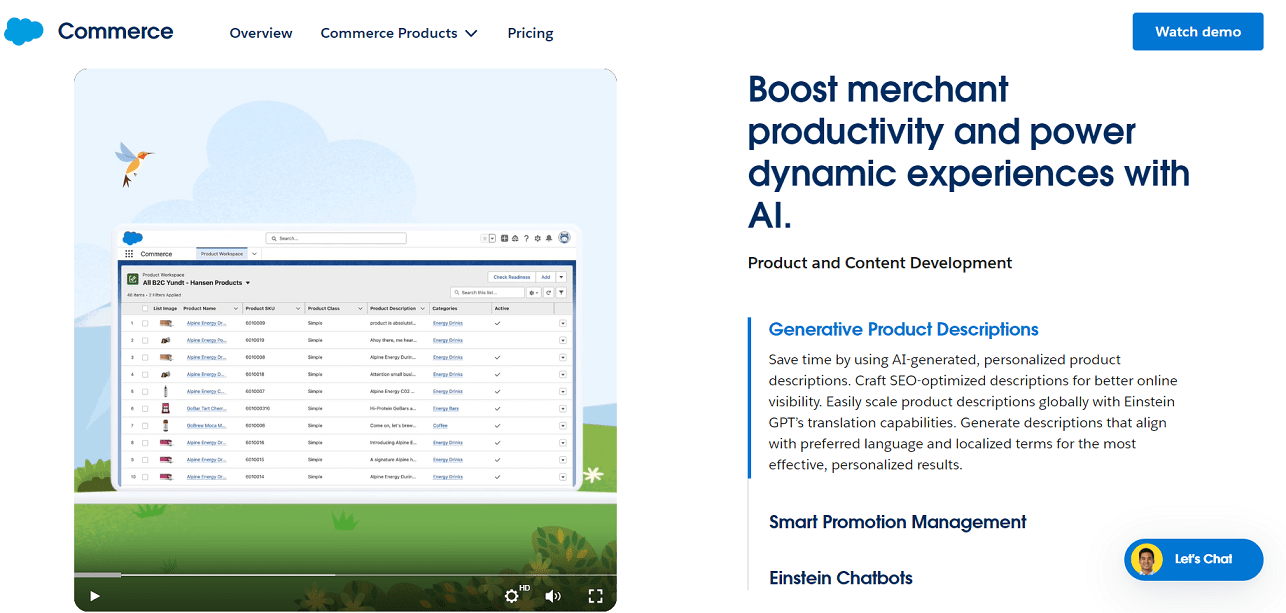✨Quick Answer:
Here are five AI-driven pricing tactics to increase e-commerce revenue:
1. Dynamic Pricing: This approach adjusts prices in real time based on market activity, helping businesses stay competitive and capitalize on sales opportunities.
2. Competitor Analysis: AI tools track competitors’ pricing strategies, providing insights that guide businesses in strategic pricing decisions.
3. Continuous Monitoring: AI continuously refines its predictions and strategies, learning from previous results to improve decision accuracy.
4. Optimizing Promotions: AI determines optimal promotional timing and targets the most responsive customer segments.
5. Predictive Pricing: This method employs AI to anticipate market shifts, consumer needs, and cost changes, allowing for proactive price adjustments.
Exploring AI-Driven Pricing in Online Shopping
The concept of AI-powered pricing in e-commerce revolves around using artificial intelligence to set prices dynamically. This approach helps businesses adapt to market demands, competitor prices, and consumer behavior in real-time.
AI’s analysis of large datasets helps identify trends and patterns that influence pricing strategies, allowing businesses to make price adjustments for revenue optimization.
⚡ Check also ➡️ How AI Can Benefit Your Business
1. The Role of Dynamic Pricing
Dynamic pricing brings a modern twist to setting prices, using advanced AI to adjust them based on the latest market trends and customer preferences. It’s a step away from the old fixed-price model, allowing businesses to respond swiftly to changes in demand or competition.
This method uses real-time data to make sure prices are always in line with what’s happening in the market, helping businesses stay competitive and make the most out of every selling opportunity.
Below are some ways how dynamic pricing can increase revenue in e-commerce:
- Meeting High Demand: When a product becomes popular, AI-driven dynamic pricing suggests raising its price. This might seem odd, but it’s a smart move to make more money. AI knows what customers are willing to pay for popular stuff.
- Selling More of Slow Sellers: For products that don’t sell well, AI recommends lowering their prices. This makes them more attractive to budget shoppers. This attracts price-conscious customers and increases sales volumes. While it may slightly lower profits, the overall revenue benefits from higher sales
- Adapting to Market Changes: E-commerce changes a lot, with prices going up and down. AI keeps businesses flexible. It helps them keep prices competitive with what’s happening right now in the market. This enables businesses to seize opportunities to earn more money.
2. Keeping an Eye on the Competition
Competitor analysis is another essential aspect of AI-powered pricing. Continuously monitoring how competitors price their products allows AI systems to empower businesses in making informed decisions about their pricing strategies.
Staying competitive doesn’t always involve being the cheapest; at times, maintaining higher prices can position products as premium offerings in the market.
For instance, take a tool like Competera. It’s designed to assist businesses in competitive markets. Competera uses AI to track and analyze competitor pricing in real time, offering actionable insights into market trends, competitor price changes, and shifts in consumer demand.

Competera’s AI algorithms handle extensive data, suggesting suitable pricing strategies that help businesses stay competitive. This is important in markets where how you stand out and your brand’s image are just as important as pricing.
3. Continuous Monitoring and Refinement
An AI-powered pricing strategy requires ongoing monitoring and refinement. AI algorithms can learn from past outcomes, improving their accuracy over time.
As we continuously review and adjust our pricing, it’s equally important to consider how our customers make payments. Having the appropriate marketplace payment options improves the functionality of the checkout procedure. These options should be user-friendly, secure, and offer different options to meet everyone’s preferences.
Now, with the integration of AI technology, this process can be further improved. AI identifies each customer’s preferred payment method, whether it involves credit cards, digital wallets, or installment plans.
For instance, when a customer shows a preference for paying in installments for big purchases, AI can automatically suggest this option at checkout. Using AI to personalize payments increases the chances of customers completing purchases, which boosts sales and encourages repeat business.
This ongoing process guarantees that our pricing strategies remain successful in response to changing market conditions and customer preferences.
4. Optimizing Promotions With AI
AI has a notable impact on optimizing promotional strategies. It helps identify the best times for promotions and which customer segments are most likely to respond. This method helps maintain the impact of discounts and promotions in boosting sales without overly impacting profit levels.
AI also enables the creation of personalized offers customized to individual consumer profiles, further improving the outcome of promotional campaigns.
For optimizing promotions with AI in the context of e-commerce, brands can look towards tools like Salesforce Commerce Cloud. This platform offers AI-driven features through its Einstein AI technology, which enables personalized shopping experiences.

Through the analysis of customer data, including past purchases, browsing behavior, and engagement patterns, Salesforce Commerce Cloud empowers brands to provide customized promotions and product recommendations directly to their target audience.
5. Predictive Pricing
Predictive Pricing is a forward-looking strategy that uses AI to forecast future market trends, consumer demand, and cost fluctuations to adjust prices preemptively.
Unlike dynamic pricing, which responds to current market conditions, predictive pricing aims to anticipate changes before they happen, allowing businesses to stay a step ahead of the competition.
Consider a travel company using predictive pricing to adjust prices for flights and hotels. Analyzing trends enables the prediction of increased demand for certain destinations around specific events or seasons, allowing for early price adjustments. This proactive approach helps achieve peak profitability before the actual surge in demand.
AI in E-commerce: What’s Next
Looking ahead, AI will make pricing in online shopping even smarter. It’ll get really good at predicting market changes and setting prices that feel right for each shopper.
Online deals will be more personalized, making everyone feel like they’re getting special treatment. AI will also work with new tech to make shopping safer and more open. There will be a bigger focus on making sure AI pricing is fair for all.
People will use AI insights for strategic decisions, allowing online stores to adapt faster and improve the shopping experience for everyone.

